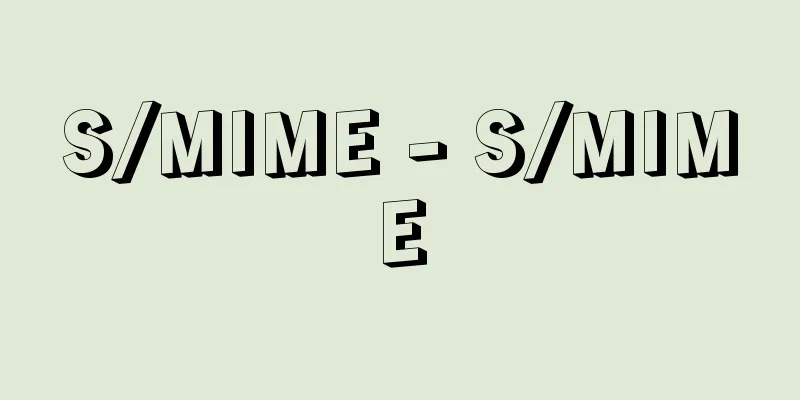Hair

|
Hair generally refers to the thread-like structures found on the surface of animals' bodies, and also refers to the projections that grow from epidermal cells in plants. Below, we will discuss animal and plant hair separately, but human hair will be treated separately as hair. [Hiroshi Ooka] Animal hairA filamentous organ that covers most of the surface of the body of mammals, and is part of the epidermis during development. The germinal layer of the epidermis thickens and extends into the dermis, forming a hair follicle (epidermal hair follicle) at its tip. The periphery of the hair follicle is called a dermal hair follicle because it is made up of the dermis. The part of the hair inside the hair follicle is called the hair root. The sebaceous gland opens at the top of the hair follicle, and the smooth muscle arrector pili muscle is attached. Hair is formed when cells divide and keratinize in the center of the hair follicle, and this cell division has a resting phase and a growing phase. The hair only grows during the growing phase, and during the resting phase, the shape of the entire hair follicle changes and the length becomes shorter, and during the growing phase, the hair papilla that was enclosed in the epidermal cells protrudes. Human hair has a long growing phase that lasts about two years, but the body hair of many mammals has a short growing phase, and the growing phase and resting phase are repeated in a regular cycle or seasonal changes, and the length of the hair is kept constant. The hair of ordinary mammals consists of soft hair (wool) and coarse hair, but there are also specially developed types such as the coarse hair of pigs and the spines of porcupines. The delicate hair of fetuses is called downy hair. Among mammals, cetaceans do not grow hair after birth. Also, some mouse strains created using mutations in laboratories are hairless. Birds have feathers instead of hair, and invertebrates have structures similar to hair such as flagella and cilia. [Hiroshi Ooka] Plant hairsIn botany, hairs are epidermal cells that protrude outward. They are not necessarily long and thin like threads, but can also be branched like branches, scaly, warty, or prickly. When identifying a plant species, characteristics such as what type of hairs are present on which parts of which organs, and whether they are present only when the plant is young or remain until it grows are often used to distinguish between similar species. The function of hairs is not entirely clear, but in addition to protection, they are often thought to repel water and regulate the amount of transpiration. Some hairs drain excess water or secrete mucus. Root hairs near the tips of the roots absorb water and nutrients dissolved in water, and anchor the roots in the ground. The spiny hairs on thin, soft stems and leaves are useful for maintaining a three-dimensional posture when in contact with other objects in the grass. The hairs on seeds and fruits help them to be dispersed over long distances by wind or animals, and some of these are used, such as in cotton and poppy. The hairs on the stigma of the pistil are suitable for attaching pollen, both in terms of their shape and the mucus on their surface. Special examples include the stinging hairs of nettles, which contain poison, and the sensory hairs of Venus flytraps, which detect insects by touching them and help them catch them. Although they look similar to hair, projections that contain not only the epidermis but also ground tissue are distinguished by being called hairs. [Fukuda Taiji] [References] | | | |Source: Shogakukan Encyclopedia Nipponica About Encyclopedia Nipponica Information | Legend |
|
一般に動物の体表にみられる糸状物をいい、植物でも表皮細胞から発生した突起物を毛とよんでいる。以下、動物と植物に分けてそれぞれ述べるが、ヒトの毛については毛髪として別に扱っている。 [大岡 宏] 動物の毛哺乳(ほにゅう)類の体表の大部分を覆う糸状の器官で、発生的には表皮の一部である。表皮の胚芽(はいが)層が肥厚し、真皮の中に伸びて、その先端に毛嚢(もうのう)(表皮性毛嚢)を生じる。毛嚢の周辺部は真皮からできるので真皮性毛嚢とよばれる。毛嚢の中にある毛の部分を毛根という。毛嚢の上部には皮脂腺(せん)が開き、また平滑筋性の立毛筋がつく。毛嚢の中心部で細胞が分裂し角化したものが毛であるが、この細胞分裂には休止期と成長期があり、成長期のときだけ毛が伸長し、休止期になると毛嚢全体の形態も変化し、長さが短くなり、成長期には表皮細胞に抱き込まれていた毛乳頭が突出するようになる。ヒトの頭髪などは成長期が長く2年ほども続くが、多くの哺乳類の体毛は成長期が短く、一定の周期または季節変化によって成長期と休止期を繰り返し、毛の長さは一定に保たれる。一般の哺乳類の毛は軟毛(綿毛(わたげ))と粗毛とからなるが、ブタなどの剛毛、ヤマアラシの棘(とげ)などのように特殊な発達をしたものもある。胎児などの繊細な毛をうぶ毛という。哺乳類でもクジラ類は出生後は毛を生じない。また実験室で突然変異を利用してつくられたマウスの系統のなかには無毛のものがある。鳥類では毛のかわりに羽毛があり、無脊椎(むせきつい)動物で毛に似た構造としては鞭毛(べんもう)、繊毛などがある。 [大岡 宏] 植物の毛植物学で毛とよばれるものは、表皮の細胞が外方へ突出したものである。かならずしも糸状の細長いものだけでなく、樹枝状に分岐したもの、鱗(うろこ)状のもの、いぼ状のもの、刺(とげ)状のものなど、さまざまな形態のものがある。植物の種類を同定するに際して、どの器官のどの部位にどんな形状の毛が生ずるか否か、またそれが若いときだけあるのか、成長後まで宿存するか、などの特徴は、しばしば類似種との区別点とされる。 毛の役目はかならずしも明らかでないが、保護のほか、多くの場合は水をはじいたり、蒸散量を調節するのに役だっていると考えられる。余分な水を排出し、または粘液を分泌する毛もある。根の先端付近に生じる根毛は、水や水に溶けた養分を吸収する役と、根を地中に固着させる役をしている。細く軟らかい茎や葉に生じた刺状の毛は、草むらの中で他物と接触して自身の立体的な姿勢を保つのに有効である。種子や果実に生じた毛は、風や動物によって遠くまで散布されるのに役だち、このなかにはワタやパンヤのように利用されるものもある。雌しべの柱頭の毛は、形態と表面の粘液の両面から花粉を付着させるのに適している。特殊な例としては、毒液を含むイラクサの刺毛(しもう)、虫の接触を感じて捕虫に役だつハエジゴクの感覚毛などがある。 外見が毛に似ていても、表皮だけでなく基本組織をも含む突起物は、毛状体とよんで区別される。 [福田泰二] [参照項目] | | | |出典 小学館 日本大百科全書(ニッポニカ)日本大百科全書(ニッポニカ)について 情報 | 凡例 |
Recommend
Václav I Svatý
Around 910-929 The first Christian monarch of the ...
Hanayama [Village] - Hanayama
A village in Kurihara County, northwest of Miyagi ...
Peary - Robert Edwin Peary
American explorer and naval officer. Born in Cres...
Zhang Liang
[1] A meritorious official in the early Han dynast...
Nose monkey story - Nose monkey story
Otogi-zoshi. One of the Shibukawa versions. Irairu...
Oshima Bridge - Oshima Toucan
(Saikai City, Nagasaki Prefecture) A tourist attra...
Alopecia - alopecia
Hair has a lifespan, and physiologically we lose ...
Matsumoto Domain
A domain that ruled over the Matsumoto region of ...
Death certificate - Shiboushindansho
It is a "document certifying the fact of dea...
Ferdinando IV
… When the War of the Spanish Succession began, t...
Otomiya Asahi Armor
Joruri. Historical piece. Five acts. A collaborati...
Olympus (Cyprus) - Olympus
… [Nature] The coastline is winding and has many ...
Soviet Encyclopedia - Dictionary of Towers and Towers (English)
The Soviet encyclopedia. [Mitsunaga Yayoshi/Tatsu...
El Buenta del Arzobis Pottery - El Buenta del Arzobis Pottery
…On the other hand, in contrast to the lusterware...
Zoshchenko
Russian (Soviet) writer. Born in Poltava. A master...









